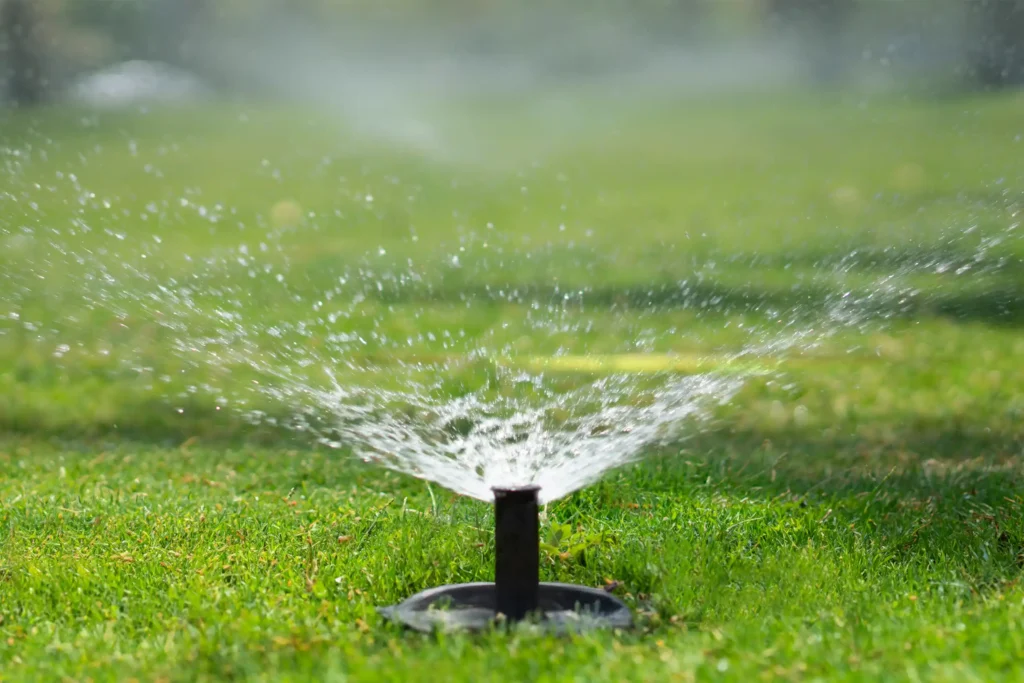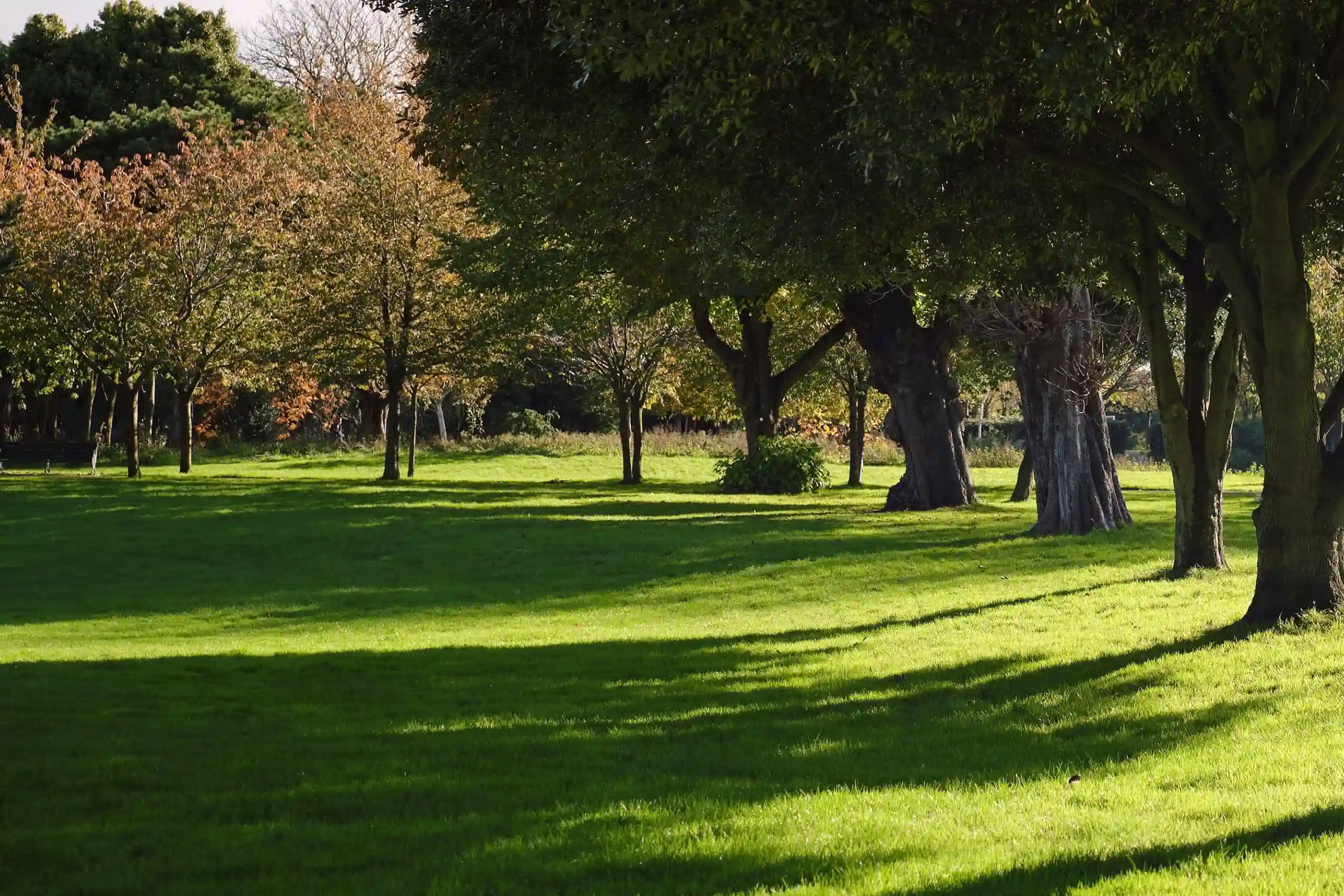Ornamental grasses are a great way to add texture, colour, and movement to any outdoor space.
They can be a great addition to borders that need sprucing up or planted in containers to improve your garden’s vibrancy.
However, like all other grass types, ornamental grasses require a good level of care to thrive all year round.
In this guide, we’ll explore everything you need to know about ornamental grasses, from different types and care tips to ideal planting conditions and common mistakes to avoid.
What is ornamental grass?
Ornamental grasses are a grass variety that is used for decorative purposes in gardens.
They are easily identified by their long, narrow, and strappy leaves, some of which develop feathery flower heads in summer and autumn.
Many gardeners favour ornamental grasses as they can seamlessly be integrated into any garden.
Ornamental grasses can either be used to complement the other plants in your garden or as striking focal points.
In addition, these grasses are easy to grow and require very little care once established.
Types of ornamental grasses
There are a variety of ornamental grass varieties to choose from, all of which have their own unique conditions and requirements to thrive.
These grasses fall into two categories:
Deciduous grasses
These grass types tend to dry out or turn brown during the winter months in order to conserve their energy.
Similarly, deciduous plants will lose their foliage and enter dormancy in winter, appearing dry or bare.
However, it is important to remember that these grasses are very much alive under the surface.
Some examples of deciduous grasses are:
- Maiden Grass
- Molinia
- Pennisetum
- Miscanthus
- Panicum
Evergreen grasses
Evergreen ornamental grasses are quite the opposite and keep their foliage and vibrant colour all year round.
These grasses are ideal for those who want their lawn to have visual appeal throughout the seasons.
Some examples of evergreen grasses are:
- Blue Fescue
- Luzula
- Blue Moor Grass
- Pampas Grass
- Corkscrew Rush
- Tussock Grass
Do ornamental grasses prefer sun or shade?
Ornamental grasses are just like other grass types, with some being more tolerant of shade than others.
Those with gardens that are partially shaded would be better off planting ornamental grasses like Japanese Forest Grass, which favour partial to fully shaded areas.
Other grass types that would make a great choice for those with shaded gardens are:
- Sweet Flag
- Mondo Grass
- Liriope
- Blue Oat Grass
On the other hand, if your lawn receives a lot of sunlight, i.e., six or more hours per day, you will want to opt for grass that thrives in these conditions.
Maiden Grass is a great choice for those whose gardens are exposed to full sunlight, as it grows at its best in full sunlight, developing vibrant flower heads.
Here are some other sun-loving ornamental grasses:
- Switchgrass
- Little Bluestem
- Fountain Grass
- Zebra Grass
When choosing your grass type, it is always important to consider the current conditions of your garden and the growing needs of ornamental grasses.
Failing to do this could result in poor growth, weak health, and your grass and plants having the inability to flower.
What is the best time to plant ornamental grasses?
The best time to plant ornamental grasses depends on the type of grass you are planting.
Grass varieties will usually fall into one of these categories: warm-season grasses or cool-season grasses.
Warm-season ornamental grasses like Little Bluestem, Fountain Grass, and Maiden Grass will thrive in warmer temperatures and exhibit active growth.
Ideally, you will want to plant these grass types in spring (March to May).
During this time, the temperatures are rising, the soil is moist, and the risk of frost has gone.
However, if you are planting a cool-season ornamental grass like Feather Reed Grass, Blue Fescue, and Blue Oat Grass, then you will want to do so in early autumn (September to October).
Planting at this time allows cool-season grasses to thrive at their ideal temperature and establish a strong root system before harsh winter conditions set in.
How to look after ornamental grass?

Ornamental grasses require adequate care and attention to ensure they remain healthy and continue to thrive throughout the year.
| Top Tips Although they are generally lower maintenance than other grass varieties, here are some key tips to keep your ornamental grass looking its best: Watering. Newly planted grasses will require frequent watering to establish strong root systems. Ideally, you should be watering every other day and gradually reducing that down to twice a week for the remainder of the growing season. Established ornamental grass is generally drought-tolerant and will only need occasional watering during prolonged dry periods Soil. Ornamental grasses favour soil that is loamy and well-drained. Always ensure the soil is kept moist to promote germination and healthy growth. If you are struggling to keep your soil moist, it can be useful to use mulch around the base of new plants to help retain moisture Fertiliser. Unlike traditional grass varieties, ornamental grasses do not require much fertiliser at all. We recommend fertilising once in spring, using our expertly blended Spring Fertiliser, packed with nutrients to give your lawn the boost it needs Cutting back. Ornamental grasses require cutting back to remove the dead foliage that has built up over winter. Doing this allows your grass to grow and develop new shoots, as well as improving its overall appearance Dividing. This is a common practice with ornamental grasses, as they can become too large for their location or die out at the centre. When this happens, it is time to divide the plant into smaller sections. We recommend dividing your ornamental grass every three to four years to prevent overcrowding. Protecting. Although more pest-resistant than other grass varieties, ornamental grasses can still be targeted by the likes of armyworms, grasshoppers, and mites. In addition, they can also be affected by fungal diseases such as root rot, rust, and mildew. To protect your lawn against pests, you need to regularly check for signs of infestations, and if found, treat with an insecticidal soap. If you have found signs of disease, you must remove the affected foliage immediately to prevent it from spreading further. |
Should ornamental grasses be cut back each year?
Yes, deciduous ornamental grasses should ideally be cut back each year to maintain your lawn’s health and encourage new growth.
We recommend cutting a deciduous ornamental garden back in late winter or early spring, as this is before the growth period begins.
Use the following steps to successfully cut back your ornamental grass:
- Use garden shears or hedge trimmers to cut back the grass. Before you start, ensure they are sharp enough; otherwise, you risk damaging the grass blades if your tool is blunt
- Ideally, you want to cut the grass back to approximately 4-6 inches above ground level
- Promptly remove all cuttings and clippings
- Lightly rake the area to remove any remaining organic material and debris
However, if you are caring for an evergreen variety, you will not need to ‘cut back’ your lawn but rather, tidy it up.
Follow these steps to give your evergreen grass a refresh:
- Wear gloves and pull out any dead flowerheads, leaves, and debris
- For any dead stems or leaves that are still firmly attached, use shears or scissors
- Make sure you remove any dead leaves that have built up around the base of your grass, as well as any brown leaf tips
- Mulch around the base of your grass and add our nutrient-rich Perfect Prep Fertiliser to promote optimal growth
Common mistakes to avoid with ornamental grasses

Caring for your ornamental lawn is crucial to its growth and successful development.
However, as with any other area of lawn care, it can be easy to make a mistake.
Here are some common mistakes to look out for when caring for ornamental grass:
- Unsuitable conditions. Not considering the specific needs of different ornamental grasses can lead to stunted growth, weak health, or failure to develop and thrive at all. Always do your research and ensure your chosen grass variety is suited to the climate, soil, and light conditions in your garden
- Overwatering. Too much water can lead to your grass becoming water-logged, increasing the likelihood of fungal growth and root rot. Ornamental grasses are generally drought-tolerant and prefer dry to moderately moist soil, so watering deeply but infrequently is recommended
- Cutting back too early. Can cause unnecessary damage to your plants and grasses, resulting in poor growth. You should ideally wait until late winter or early spring before cutting back ornamental grasses.
- Over-fertilising. Although applying fertiliser to your grass is usually a good thing, ornamental grass requires it less frequently. Over-fertilising ornamental varieties can cause excessive growth, weak health, and increased susceptibility to diseases and pests.
- Lack of space. Planting grasses too close together will lead to overcrowding, resulting in poor growth due to competition for nutrients and water.
- Ignoring pests and diseases. Failing to regularly check your lawn for pests and diseases can lead to infestations or diseases that can significantly impact your grass’ health. If you do spot any sign of pests or diseases, it is best to address the problem quickly to avoid further issues down the line.
- Leaving debris. Debris and dead foliage create a barrier of thatch that can block essential nutrients from reaching your grass roots. They also create the perfect environment for pests and diseases to call home.
- Failing to divide. Not dividing your grasses into more manageable sections can lead to stunted growth and poor health, resulting in less flowering.
Ready to create your dream ornamental garden?
Ornamental grasses are a beautiful and low-maintenance addition to any garden, adding colour and texture throughout the year.
Understanding the specific needs of different grass types, avoiding common mistakes, and providing a good level of care are key to achieving a vibrant and healthy ornamental garden.
Not sure where to start? Take our quiz to be matched with your perfect lawn care bundle today.
